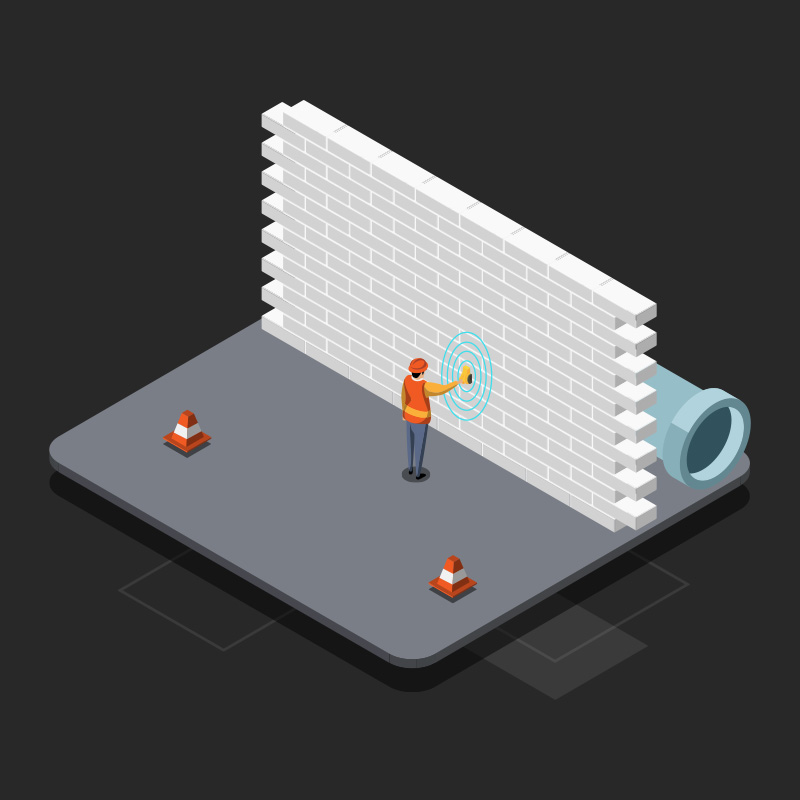The Relevance of Expert Concrete Scanning Solutions
The Relevance of Expert Concrete Scanning Solutions
Blog Article
Past the Surface Area: Leveraging Advanced Concrete Scanning Techniques for Unmatched Accuracy and Insight
Advanced concrete scanning strategies have actually emerged as crucial tools in this pursuit, providing a glance underneath the surface area to reveal a globe of essential insights. By using sophisticated modern technologies, professionals can discover abnormalities, examine the problem of concrete frameworks, and make notified choices that form the program of tasks.
Value of Advanced Concrete Scanning
The relevance of making use of innovative concrete scanning methods depends on the unequaled accuracy they offer for identifying sub-surface anomalies and ensuring structural integrity. By employing sophisticated innovations such as ground-penetrating radar (GPR), electro-magnetic induction, and progressed sonar imaging, building and construction specialists can delve below the surface area of concrete structures with a level of accuracy that much exceeds traditional assessment approaches. Concrete Scanning. These strategies make it possible for the recognition of covert dangers like rebar deterioration, gaps, channels, or post-tension cords that could jeopardize the stability and safety and security of a structure with time
Furthermore, advanced concrete scanning gives vital insights into the overall condition of a concrete aspect without the requirement for intrusive procedures, lessening the danger of triggering damage throughout the evaluation procedure. The capability to determine the precise place and depth of possible concerns permits targeted repair work and maintenance, inevitably extending the lifespan of the structure and optimizing its performance. Basically, the relevance of advanced concrete scanning can not be overemphasized in the world of building and framework upkeep, where accuracy and dependability are vital.
Kinds of Cutting-Edge Technologies

Anomalies and Flaw Detection

Along with GPR, concrete scanning strategies like thermography and impact-echo testing are likewise efficient in detecting defects company website and anomalies. Thermography uses infrared innovation to recognize variants in surface area temperature level, suggesting prospective locations of problem such as delamination or dampness ingress. On the various other hand, impact-echo screening involves analyzing acoustic responses to spot spaces, splits, and various other issues within the concrete. By leveraging these sophisticated strategies, professionals can proactively address architectural concerns, making certain the longevity and safety and security of concrete structures.
Assessing Concrete Condition
How can engineers precisely examine the problem of concrete structures to guarantee their longevity and security? Various sophisticated concrete scanning methods are used for this purpose. Ground-penetrating radar (GPR) is typically used to examine the interior structure of concrete, spotting gaps, cracks, and various other abnormalities that may endanger its toughness.
Furthermore, visual examination stays a fundamental part of concrete condition assessment. Engineers visually examine the surface for indicators of damage, such as spalling, fracturing, or discoloration. Combining non-destructive screening techniques with visual evaluations enables a find more information thorough examination of concrete problem, enabling designers to identify possible issues early on and apply prompt upkeep or repair work. By leveraging these sophisticated strategies, designers can ensure the long-lasting durability and safety and security of concrete structures.
Enhancing Decision-Making Processes
In the realm of framework administration, maximizing decision-making processes is essential for making certain the reliable maintenance and durability of concrete frameworks. Improved decision-making procedures in concrete monitoring include making use of sophisticated scanning methods to collect in-depth information on the condition of frameworks. By leveraging innovations such as ground-penetrating radar and 3D imaging, stakeholders can make informed choices regarding substitute, repair work, or reinforcement techniques.
These progressed scanning methods provide very useful understandings into the inner structure of concrete, identifying possible problems such as gaps, fractures, or deterioration that might not show up on the surface area. This level of detailed information enables positive upkeep preparation, lessening the danger of structural failures and enhancing the total life-span of concrete frameworks.
Additionally, by incorporating digital documentation and analysis tools into the decision-making process, stakeholders can track the advancement of concrete problems with time, making it possible for anticipating upkeep techniques and maximizing resource allocation. Ultimately, the combination of sophisticated concrete scanning methods enhances decision-making processes by giving unmatched precision, insight, and effectiveness in framework management.
Verdict
Finally, progressed concrete scanning techniques provide unrivaled precision and insight in detecting abnormalities, problems, and examining the condition of concrete frameworks. By leveraging sophisticated innovations, decision-making processes can be boosted, bring about even more efficient and enlightened remedies for preserving and fixing concrete infrastructure. These methods play a critical duty in guaranteeing the safety and security and longevity of concrete structures, making them a crucial device in the area of building and construction and engineering.
Additionally, advanced concrete scanning supplies vital understandings right into the overall condition of a concrete element without the demand for intrusive measures, lessening the threat of causing damages throughout the evaluation procedure - Concrete Scanning. One more cutting-edge modern technology is 3D X-ray scanning, which supplies comprehensive images of the inner framework of concrete, offering beneficial information without top article the need for harmful testing. Additionally, Concrete Cover Meters are used to measure the thickness of concrete cover over reinforcement bars accurately. Enhanced decision-making procedures in concrete administration involve utilizing sophisticated scanning techniques to collect thorough information on the problem of structures.In conclusion, progressed concrete scanning methods use unrivaled accuracy and understanding in detecting anomalies, defects, and assessing the condition of concrete frameworks
Report this page